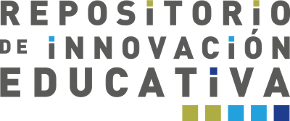Por favor, use este identificador para citar o enlazar este ítem:
https://www.innovacioneducativa.unam.mx:8443/jspui/handle/123456789/4255Registro completo de metadatos
| Campo DC | Valor | Lengua/Idioma |
|---|---|---|
| dc.contributor.author | Ruiz Ledesma, Elena Fabiola | |
| dc.contributor.author | Gutiérrez García, Juan Jesús | |
| dc.contributor.author | Garay Jiménez, Laura Ivoone | |
| dc.date.accessioned | 2020-03-02T16:05:57Z | - |
| dc.date.available | 2020-03-02T16:05:57Z | - |
| dc.date.created | 2018-04 | |
| dc.date.issued | 2018 | |
| dc.identifier.issn | 1665-2673 | |
| dc.identifier.uri | http://132.248.161.133:8080/jspui/handle/123456789/4255 | - |
| dc.description.abstract | Abstract: One of the problems presented in the teaching of calculus is that mechanical work prevails in the classrooms, reducing the time for the construction of concepts, as well as preventing visual considerations when they are approached. This paper focuses on proposing elements that allow students to visualize situations that incorporate the concept of the derivative, such as the case of the reason for instantaneous change. To this end, we used the technology available to young people, such as mobile devices and specific computer applications. We also used Augmented Reality since this technology has been considered a successful support in certain educational aspects, such as attention and visual-spatial relationships. To evaluate the system a sample of two groups of 30 students each was used; one was a control group (CG) and the other a research group (RG). Both were evaluated after having worked through a sequence of teaching in which the same test was used with different tools. The results showed that the research group identified the concept of the derivative and correctly solved a higher percentage of problems in the final questionnaire compared with the control group. The average increase of the RG was from 2.6 to 7.4, and the CG was from 2.08 to 4, which led to the conclusion that activities supported by mobile devices contribute to the improvement of visualization and the construction of concepts. | |
| dc.language | es | |
| dc.relation.ispartof | SciELO México | |
| dc.rights | Derechos reservados | |
| dc.source | Innovación educativa (México, DF), 18(76):39-67 | |
| dc.title | Visualizando problemas de la derivada con aplicaciones en dispositivos móviles | |
| dc.type | Articulo | |
| dcterms.bibliographicCitation | Ruiz Ledesma, Elena Fabiola; Gutiérrez García, Juan Jesús y Garay Jiménez, Laura Ivoone (2018). Visualizando problemas de la derivada con aplicaciones en dispositivos móviles.Innovación educativa (México, DF), 18(76):39-67. Disponible en: http://www.scielo.org.mx/scielo.php?script=sci_arttext&pid=S1665-26732018000100039&lang=es | |
| dc.identifier.sinne | SCI177 | |
| dc.identifier.url | http://www.scielo.org.mx/pdf/ie/v18n76/1665-2673-ie-18-76-39.pdf | |
| dc.subject.keywords | Ambiente educativo; | |
| dc.subject.keywords | aprendizaje; | |
| dc.subject.keywords | cálculo; | |
| dc.subject.keywords | computación y educación; | |
| dc.subject.keywords | conocimiento matemático; | |
| dc.subject.keywords | dificultades específicas de aprendizaje; | |
| Aparece en las colecciones: | Artículos científicos y académicos | |
Ficheros en este ítem:
No hay ficheros asociados a este ítem.
Los ítems de DSpace están protegidos por copyright, con todos los derechos reservados, a menos que se indique lo contrario.


